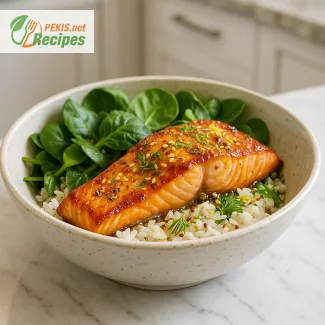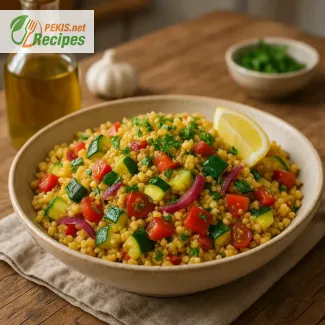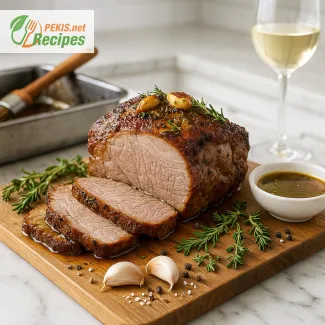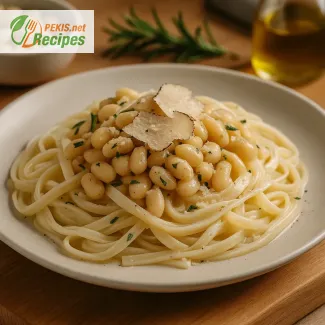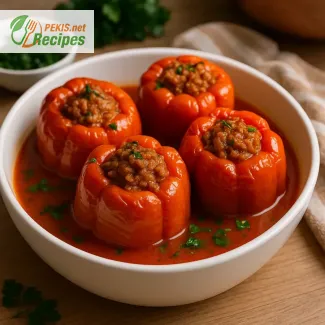
Discover the heart of Balkan cuisine with this slow-cooked pepper delicacy
Traditional flavors meet home-style comfort in every bite
When it comes to soul-warming dishes that blend rustic simplicity with rich, layered taste, few meals match the comfort of Serbian stuffed peppers, known regionally as punjene paprike. This signature Balkan comfort food is deeply rooted in the culinary traditions of Southeast Europe, particularly Serbia, where recipes are handed down through generations, each with slight variations but always with one goal: creating a heartwarming, delicious meal with humble ingredients.
At the core of this dish is the balance between sweetness and umami—the sweet peppers, gently softened during baking, envelop a savory mix of ground meat, rice, onions, and select spices. As the dish slowly simmers in a tomato-based sauce, the flavors meld into a comforting unity that tells a story of tradition, home, and togetherness. It’s the kind of meal often found at Sunday family tables, festive gatherings, or prepared in large batches for cold-season meals.
What sets Serbian-style stuffed peppers apart from similar dishes in Central or Western Europe is the balance between spices and texture. Rather than relying on cheese or breadcrumbs like in Mediterranean variants, this version maintains a moist, meaty interior with a soft but intact pepper shell. It’s the juxtaposition of tender filling and juicy pepper that gives punjene paprike its signature mouthfeel.
A regional staple that transcends borders
In the Balkans, stuffed vegetables are a culinary category of their own. Dishes like sarma (stuffed cabbage) and musaka (layered meat and potatoes) form the core of many national cuisines. Yet punjene paprike holds a unique spot thanks to its seasonal versatility and preparation flexibility. While traditionally prepared in late summer and early autumn when peppers are at their peak, modern home cooks prepare it year-round using a variety of peppers, from vibrant red to pale green.
Whether you're preparing a weekday dinner or curating a menu for a Balkan-themed feast, this dish adapts seamlessly. Its appeal lies not only in the flavor but also in its make-ahead nature and suitability for freezing, making it practical for modern lifestyles without sacrificing authenticity.
The secret is in the slow cooking
Authenticity begins in the preparation: once the peppers are filled with the seasoned meat and rice mixture, they’re nestled into a deep pot or baking dish and slowly cooked in a rich tomato broth. This allows the filling to absorb moisture while the peppers gently collapse, releasing their natural sweetness into the sauce. Over time, the broth thickens into a delicate gravy, which is often spooned over mashed potatoes, crusty bread, or simply enjoyed on its own.
In Serbia, this cooking technique is considered more than just culinary—it’s a reflection of patience, home-cooked love, and seasonal respect. Many households still simmer these peppers in traditional earthen pots or cast-iron cookware, imparting a subtle earthy aroma that elevates the entire dish.
Authentic ingredients, elevated simplicity
A true punjene paprike recipe relies on simple ingredients that harmonize beautifully: bell peppers, ground beef or pork, short-grain rice, onion, paprika powder, and tomato purée. Each ingredient plays a key role. The peppers should be fresh and uniform in size to ensure even cooking. The rice must be parboiled just right—not too raw to soak up moisture, and not overcooked to avoid becoming mushy. The meat should have a good fat ratio for richness without greasiness.
What elevates the dish beyond its basics is the use of sweet Hungarian paprika, bay leaves, and sometimes a touch of garlic or parsley—ingredients that infuse every bite with warmth and depth.
Comfort food with cultural resonance
In many Serbian households, punjene paprike is more than just a dish—it’s a nostalgic reminder of childhood lunches, family gatherings, and grandmothers cooking in warm kitchens. It’s a representation of how food can serve as a connector between generations and communities, between tradition and modernity.
This rich, hearty dish embodies the spirit of Balkan hospitality—generous, warm, and deeply satisfying. Whether you’re familiar with Balkan food or just discovering its richness, Serbian stuffed peppers are a perfect introduction.
The aroma alone—roasted pepper mingling with savory meat and tangy tomato—is enough to transport you to a Serbian village kitchen, where time slows down and meals are meant to be shared.
From traditional Sunday lunches to everyday family meals, this dish holds its place as a timeless classic, offering a nourishing experience in every spoonful.
- Wash and core the bell peppers, removing seeds and membranes while keeping them whole. Set aside.
- In a large bowl, combine ground beef, uncooked rice, finely chopped onion, minced garlic, paprika powder, salt, black pepper, and chopped parsley. Mix thoroughly until evenly blended.
- Fill each pepper with the meat-rice mixture, pressing down lightly to compact the filling but leaving a small space at the top for rice to expand.
- Arrange stuffed peppers upright in a deep pot or Dutch oven, placing them snugly to prevent tipping.
- In a separate bowl, combine tomato purée, tomato passata, and water or broth, and pour this mixture over the stuffed peppers until nearly covered. Add bay leaves to the liquid.
- Drizzle sunflower oil on top and bring to a gentle simmer over medium heat.
- Cover and cook for approximately 60 minutes, occasionally spooning sauce over the tops. Peppers should become tender, and sauce will slightly thicken.
- Remove from heat and let rest 10 minutes before serving. Serve with mashed potatoes, fresh bread, or enjoy as a standalone dish with sauce.
Elevate your stuffed pepper recipe with smart kitchen techniques
Simple ingredient swaps and clever tips for deeper flavor and better texture
The beauty of Serbian stuffed peppers (punjene paprike) lies in their modesty—common pantry ingredients slowly transformed into a deeply satisfying dish. But just because a recipe is traditional doesn’t mean it can’t be refined. With a few thoughtful enhancements, you can turn this classic into a personal signature dish without compromising its Balkan soul.
Choose the right peppers for taste and texture
One of the most impactful ways to improve the dish is by selecting the best bell peppers. While the traditional recipe often uses pale green or red varieties, opting for red or yellow bell peppers can enhance the natural sweetness and give the tomato sauce a more vibrant flavor. Avoid using peppers that are too thick-walled, as they can take longer to cook and sometimes retain a rubbery texture even after simmering.
Smaller, uniform-sized peppers not only cook more evenly but also allow for a better meat-to-pepper ratio, enhancing each bite.
Enhance the filling with layered flavor
The classic filling—typically a mix of ground beef, rice, onion, and seasonings—can be elevated with a few additions. Incorporating minced garlic, fresh parsley, and a pinch of dried oregano or thyme adds aromatic complexity. For more depth, try mixing meats, such as combining ground beef with pork or veal. This not only improves moisture but introduces subtle variations in flavor.
Swapping in short-grain rice like arborio, instead of regular white rice, gives a slightly creamier texture that holds together well during cooking.
Tomato sauce: don’t settle for bland
The sauce is more than just a cooking medium—it’s an integral part of the dish. Instead of relying solely on water and tomato purée, use low-sodium beef or vegetable broth to intensify the savory base. Stir in a touch of smoked paprika or a small spoon of ajvar (a Balkan red pepper spread) to enrich the flavor profile.
Letting the sauce simmer with bay leaves, a dash of sugar, or even a splash of red wine vinegar balances acidity and helps the sauce reduce into a luxurious, spoon-coating consistency.
How to avoid common mistakes
A frequent issue when making stuffed peppers is overcooking or undercooking the rice. Uncooked rice can remain hard if there’s not enough liquid, while pre-cooked rice can become mushy. The ideal approach is to use parboiled rice—cooked just halfway—so it finishes perfectly during the slow cooking process.
Another error is overstuffing the peppers. This can cause the filling to expand and burst the pepper walls, leaking out into the sauce. Leave a small gap at the top when filling each pepper.
Skipping the resting period after cooking is also a mistake. Letting the dish sit for 10–15 minutes before serving allows the flavors to settle and intensify.
Make it healthier without losing flavor
If you're looking for a lighter alternative, replace ground beef with ground turkey or chicken. Add grated carrots or zucchini into the filling to increase fiber and reduce the meat content without sacrificing texture. Instead of white rice, use brown rice or quinoa for a more nutrient-dense option.
To cut down on saturated fats, cook the peppers with olive oil instead of sunflower oil, and opt for homemade broth with no added preservatives. These small changes not only make the meal more wholesome but also subtly enhance its flavor.
Why homemade wins every time
Pre-packaged versions of stuffed peppers, often found in frozen aisles, tend to lack the freshness, seasoning balance, and nuanced texture of a homemade version. When you cook from scratch, you control every component—choosing high-quality ingredients, adjusting spice levels, and ensuring the cooking time aligns perfectly with the texture you want.
Homemade punjene paprike also allow for personal touches: more herbs for fragrance, a thicker sauce for richness, or a spicy kick with chili flakes.
Serve it with purpose
While traditional side dishes include mashed potatoes or crusty bread, consider serving the peppers with cauliflower mash or roasted root vegetables for a modern twist. A dollop of plain yogurt on the side can provide a creamy contrast and lightness to the dish’s rich tomato base.
Whether you're preparing a weekday meal or entertaining guests, these enhancements will transform your Serbian stuffed peppers into a memorable culinary experience—rooted in tradition but refined for today’s kitchen.
Allergens present in the recipe:
- None of the major allergens (no milk, egg, gluten, nuts, soy, or shellfish). However, cross-contamination from rice or spices is possible.
Contains gluten:
- The recipe is naturally gluten-free, assuming the rice and spices are certified gluten-free.
Tips for allergen and gluten-free substitutions:
- To ensure 100% gluten-free, double-check that rice and tomato products are certified gluten-free.
- If using broth, verify it contains no wheat derivatives.
Vitamins and minerals per serving (approximate):
- Vitamin C: 95 mg – Supports immune system and skin health
- Vitamin A: 1200 IU – Important for vision and immune function
- Iron: 3.5 mg – Supports red blood cell formation
- Potassium: 700 mg – Helps maintain healthy blood pressure
- Magnesium: 45 mg – Supports nerve and muscle function
- Folate: 60 µg – Essential for DNA synthesis and repair
Antioxidants per serving (approximate):
- Lycopene (from tomato): 6 mg – May reduce risk of certain cancers and support heart health
- Beta-carotene (from peppers): 2 mg – Supports eye health and reduces oxidative stress
- Vitamin E: 1.5 mg – Protects cells from oxidative damage
